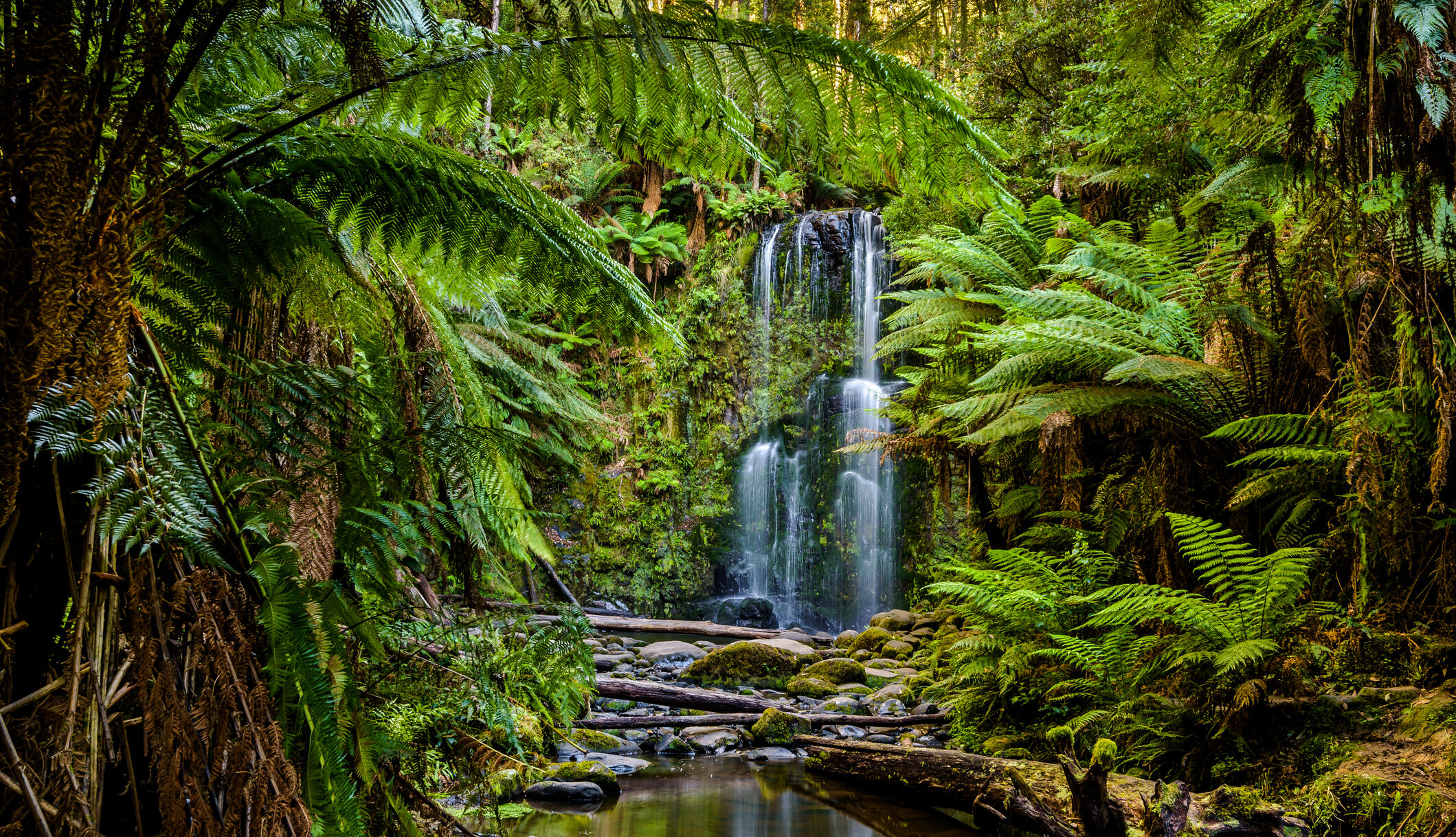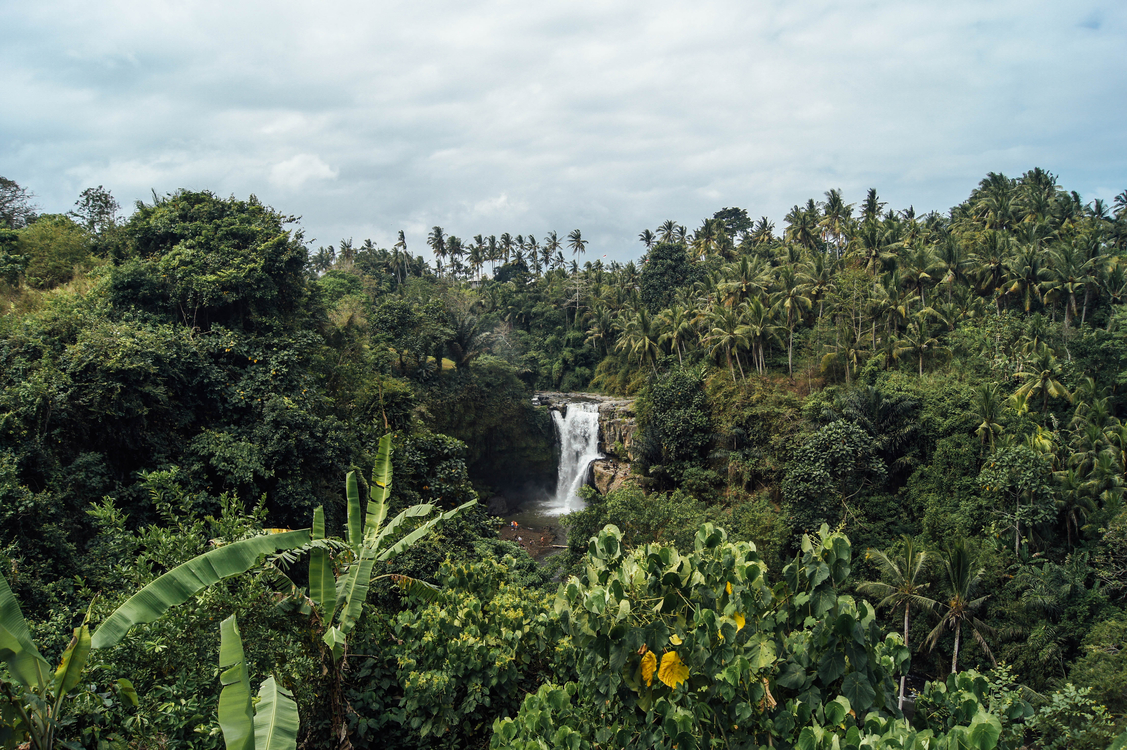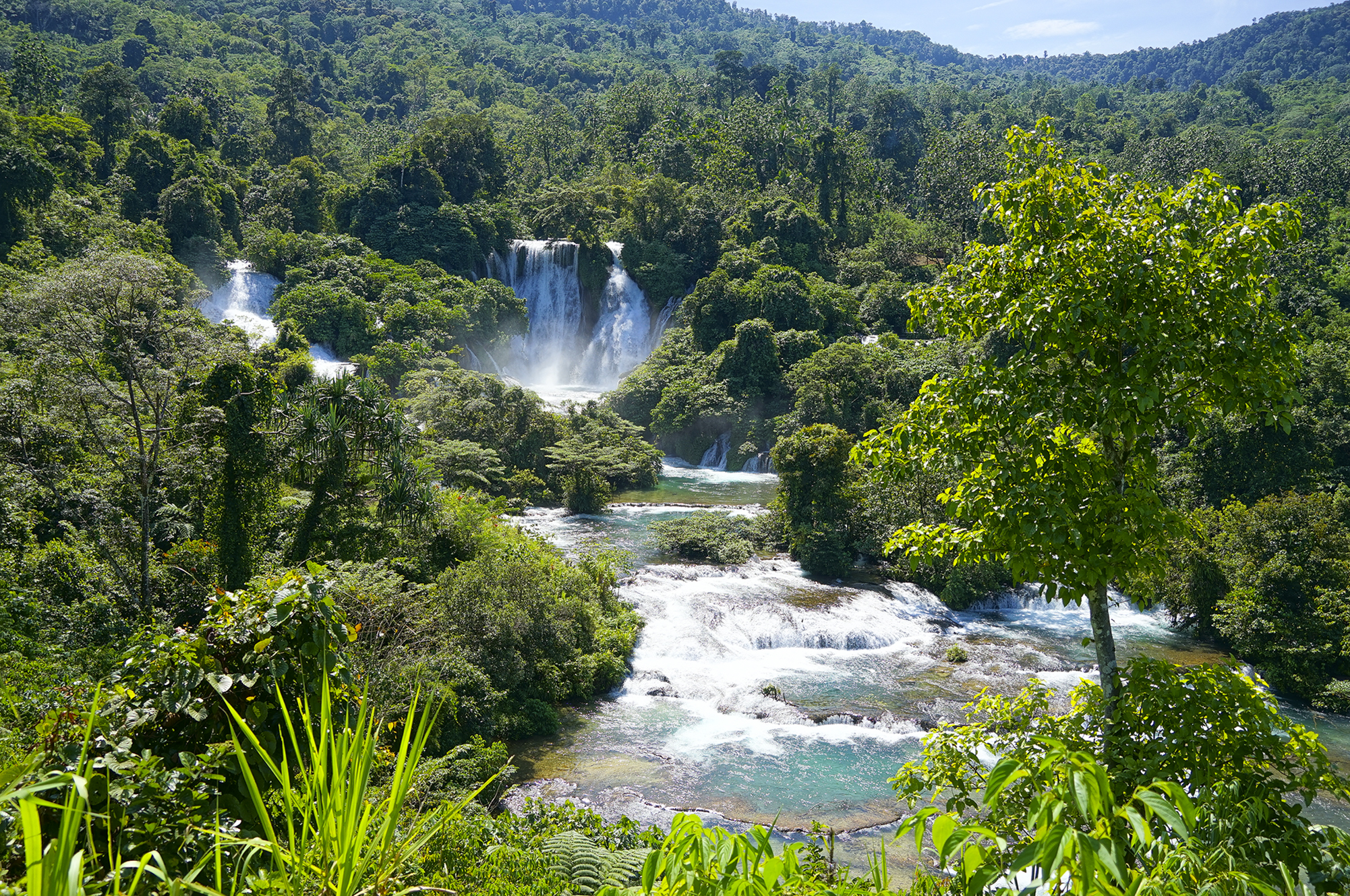From an ecological perspective, rainforests are some of the most precious locations on Earth. These regions are teeming with unusual organisms that increase the biodiversity of our planet. Moreover, trees are significant carbon sinks. However, they are currently being attacked as nations try to make more space for business and agriculture. Take a look at the top five biggest rainforests in the world to learn how they contribute to life on this planet and how seriously threatened they are right now.
5. Eastern Australian Temperate Forests

- Type: Temperate
- Continent: Oceania
- Size: 222,100 square kilometers
- Countries: Australia
Between around 30- and 40 degrees south latitude, the eastern coastal region of Australia is home to a kind of forest ecosystem known as the Eastern Australian Temperate Forest. A combination of evergreen and deciduous trees, including species like eucalypts, acacias, and numerous rainforest trees, define this type of forest. These woodlands have a pleasant environment with temperatures ranging from 5 to 30°C and moderate to high rainfall, with an average of 1200–1600 mm per year.
They are also renowned for their abundant biodiversity, which includes a wide variety of localized plant and animal species. Human activity has had a significant negative impact on the eastern Australian temperate forests, especially through the destruction of agriculture and urbanization. Now protected within national parks and other conservation zones, many of the remnant forest pieces are still there. The Dandenong Ranges in Victoria, the Blue Mountains in New South Wales, and the Mount Lofty Ranges in South Australia are a few notable examples of eastern Australian temperate forests.
4. Valdivian Rainforest

- Type: Temperate
- Continent: Oceania
- Size: 430,000 square kilometers
- Countries: Equatorial Guinea, Cameroon, Democratic Republic of the Congo, Central African Republic, Republic of the Congo, and Gabon
The Valdivian rainforest is fourth among the top five biggest rainforests in the world. Southern Chile and Argentina are home to the temperate Valdivian rainforest. It is one of the few temperate rainforests left in the world and has an area of about 248,100 square kilometers (95,800 square miles). The Pudu, the smallest deer in the world, the endangered huemul deer, the South American grey fox, Darwin’s frog, and the Chilean Pud are just a few of the many plant and animal species that may be found in the Valdivian jungle. A number of ancient tree species, such as the Alerce, which can survive for over 3,000 years, are also found in the forest.
Deforestation, which is mostly a result of human activities including logging, agriculture, and infrastructure development, is a threat to the Valdivian rainforest. Deforestation in the Valdivian rainforest can lead to increased soil erosion and sedimentation in rivers and streams, which can harm aquatic ecosystems in addition to the loss of biodiversity. The Valdivian rainforest is being conserved and preserved through various measures, such as the creation of national parks and protected zones. To guarantee the long-term sustainability of this distinctive environment and its people, however, much more work must be done.
3. New Guinea Rainforest

- Type: Tropical
- Continent: Oceania
- Size: 430,000 square kilometers
- Countries: Equatorial Guinea, Cameroon, Democratic Republic of the Congo, Central African Republic, Republic of the Congo, and Gabon
The eastern half of the island of New Guinea, which is split between the nations of Papua New Guinea and Indonesia, is covered by the New Guinea rainforest, sometimes referred to as the Papua rainforest. It occupies an area of about 430,000 square kilometers and is one of the world’s largest preserved tropical rainforests (166,000 square miles). A staggering variety of plant and animal species, many of which are unique to the New Guinea rainforest, call it home. With more than 10,000 plant species, 650 bird species, and 300 mammal species, it is regarded as one of the most biodiverse locations in the world.
The New Guinea rainforest is home to a number of well-known animals, such as tree kangaroos, cassowaries, and birds of paradise. The New Guinea rainforest, like other rainforests, is threatened by logging, mining, and other human activity. These practices are causing habitat loss, biodiversity loss, and increased greenhouse gas emissions, which can have significant effects on both the local environment and the ecosystem globally. The New Guinea rainforest is being protected and preserved by numerous groups and governments, but much more has to be done to guarantee its long-term existence.
2. Congo Rainforest

- Type: Tropical
- Continent: Africa
- Size:5 million square kilometers
- Countries: Equatorial Guinea, Cameroon, Democratic Republic of the Congo, Central African Republic, Republic of the Congo, and Gabon
The second-largest tropical rainforest among the top five biggest rainforests in the world after the Amazon is the Congo rainforest sometimes referred to as the Congo Basin or the Central African rainforest. It spans multiple nations in Central Africa, including the Democratic Republic of the Congo, Republic of Congo, Cameroon, Central African Republic, Gabon, Equatorial Guinea, and Angola, and occupies an area of roughly 1.5 million square kilometers. The Congo rainforest is home to an extraordinary assortment of plant and animal species, including gorillas, chimpanzees, forest elephants, okapis, and numerous kinds of birds, insects, and plants.
By absorbing and storing significant amounts of carbon dioxide, it plays a critical part in controlling the global climate and reducing the impacts of global warming. The Congo rainforest, like the Amazon, is threatened significantly by deforestation, climate change, and other human activities including mining, logging, and agriculture. These practices are causing habitat loss, biodiversity loss, and increased greenhouse gas emissions, which can have significant effects on both the local environment and the ecosystem globally. The Congo rainforest is being protected and preserved by numerous groups and countries, but much more must be done to guarantee its long-term existence.
1. The Amazon

- Type: Tropical
- Continent: South America
- Size:7 million square kilometers
- Countries: Brazil, Colombia, French Guiana, Bolivia, Guyana, Peru, Suriname, Ecuador, and Venezuela
The Amazon rainforest, sometimes called the Amazon jungle, is a sizable tropical rainforest that extends across a number of South American nations, including Brazil, Peru, Colombia, Ecuador, Bolivia, Venezuela, Guyana, Suriname, and French Guiana. It is the largest rainforest in the world, spanning an area of over 6.7 million square kilometers (2.7 million square miles). A staggering variety of plant and animal species, many of which are unique to the Amazon jungle, call it home. By absorbing and storing significant amounts of carbon dioxide, it plays a critical part in controlling the global climate and reducing the impacts of global warming.
Yet, in addition to being threatened by deforestation, climate change, and other human endeavors like mining and agriculture, the Amazon rainforest is also under severe threat. These practices are causing habitat loss, biodiversity loss, and increased greenhouse gas emissions, which can have significant effects on both the local environment and the ecosystem globally. The Amazon rainforest is under protection and preservation efforts by numerous countries and groups, but much more has to be done to guarantee its long-term survival.
It can be difficult to compare rainforest sizes since it is not always clear where they begin and end; one forest may span many nations and be divided by islands or devastation. The biggest and second-biggest rainforests on this list of the top five biggest rainforests in the world are beyond a doubt, but the other three are determined by estimates and professional judgment. Sadly, a significant portion of these Rainforests is being destroyed to make place for farmland and homes. These seemingly little losses have already resulted in a sizable amount of land. More must be done to preserve as much of this rainforest as is humanly possible. The areas are being destroyed by wildfires and active deforestation. Both climate change and biodiversity loss will speed up as a result.















